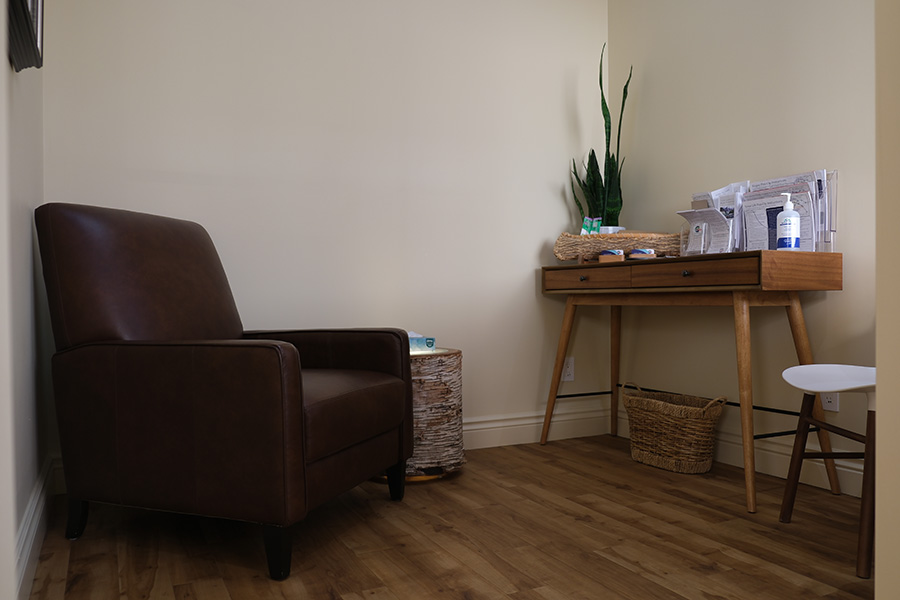If the mere prospect of seeing the dentist makes you feel anxious, you are not alone. Dental anxiety affects a large percentage of people, but is often dismissed and ignored. Many people are unable to get the critical oral care they require because they are afraid or uncomfortable just thinking about going in the dentist’s chair. The good news is that dental anxiety isn’t new, and we have developed very effective ways to help, including sedation dentistry emerging as one potential treatment.
What methods do you use to help nervous patients feel more comfortable?
To support patients who experience dental anxiety or nervousness, we have developed a compassionate approach that blends communication, comfort, and the latest in dental technology. Here are some methods used today to help patients feel more at ease:
- Open Communication: The visit starts by discussing any concerns or fears with our patients. Understanding what aspects of the visit may be causing anxiety helps us tailor the experience to individual needs.
- Calm Environment: We strive to create a soothing atmosphere in the office, which may include calming music, pleasant scents, or a comfortable waiting area, to help patients relax before their appointment.
- Pre-appointment Tours: Familiarizing patients with the environment, staff, and procedures can often alleviate fear of the unknown.
- Detailed Explanations: Explaining each step of the procedure before and during the treatment, so there are no surprises. Knowledge about what to expect can often reduce anxiety.
- Distractions: Offering distractions such as headphones with music, audiobooks, or virtual reality glasses can help take the patient’s mind off the procedure.
- Pain-Free Techniques: Dentists today employ the latest techniques to minimize discomfort, such as topical anesthetics before injections. A computer-controlled local anesthesia delivery system that is more comfortable than traditional syringes may also be available.
- Sedation Dentistry: For those who need it, various forms of sedation, from mild sedatives to help relax to more profound options for a sleep-like state during procedures, are available.
- “Stop” Signal: Patients are given the ability to signal the dentist to stop at any time during a procedure, giving them a sense of control.
- Breathing Techniques: Guiding patients through deep breathing or other relaxation techniques can help manage anxiety during dental procedures.
- Follow-Up: After the visit, a follow-up with patients to discuss how the appointment went, can help alleviate anxiety for future visits.
Our goal is to ensure that fear and nervousness don’t prevent anyone from receiving the dental care they need, and as a profession, we are committed to making dental visits as comfortable as possible for everyone.
How do you handle patients with whitecoat syndrome?
Caring for patients with whitecoat syndrome—where anxiety is triggered by medical environments or personnel—requires a compassionate and personalized approach. We begin by creating a welcoming and calming environment right from the start. Communication is paramount; we listen to our patients’ concerns and past experiences to build trust and rapport. We encourage our patients to let us know about any negative experiences they’ve had so we can manage their experiences moving forward.
Our team is trained to use gentle, reassuring language and to explain each step of the process before proceeding. We also provide clear information about the procedures and what to expect, demystifying the experience to alleviate the fear of the unknown. Fear often comes from the unknown, and by revealing the unknown, the patient is empowered.
For those who need it, we offer a range of relaxation techniques and distractions, such as music or visual entertainment, which can effectively ease nervousness. Furthermore, we are equipped to provide various sedation options, from mild sedatives to help relax to more advanced solutions for those who require them.
Our aim is to empower patients by giving them a sense of control over their treatment. We encourage them to signal us if they need a break or are uncomfortable at any point. Over time, our goal is to help patients with whitecoat syndrome overcome their fears, making dental care a routine part of their health regimen rather than a source of anxiety.
Is there anything a patient can do to prepare for a visit if they haven’t had an appointment in a while?
Absolutely, there are several steps a patient can take to ensure they are well-prepared for a dental visit after some time has passed:
- Gather Dental Records: If possible, bring along any previous dental records, including x-rays or treatment notes from your last dentist, which can give your new dentist a headstart on understanding your dental history.
- Update Medical History: Make a comprehensive list of any changes to your medical history, including new medications, allergies, or medical conditions. Your dental health is closely tied to your overall health, and changes in one can affect the other.
- Practice Good Oral Hygiene: In the days leading up to your appointment, be diligent with your oral hygiene—brush twice a day, floss daily, and rinse with an antiseptic mouthwash. This will help ensure the dentist can accurately assess your oral health.
- List Concerns and Symptoms: Write down any dental issues or symptoms you’ve experienced and any concerns or questions you may have. This ensures you won’t forget to mention anything important during your visit.
- Dietary Considerations: Eat a light meal before your appointment to help stabilize your blood sugar, which can help you feel more comfortable during the visit. Avoid extremely sticky, hard, or sugary foods right before your appointment to minimize plaque and debris.
- Arrive Early: Allow extra time before your appointment to complete the necessary paperwork without feeling rushed. This also allows you to relax and acclimate to the dental office environment.
- Relaxation Techniques: If you feel anxious, practice relaxation techniques such as deep breathing or progressive muscle relaxation in the days before and on the day of your appointment.
- Sleep Well: Ensure you get a good night’s sleep before your dental appointment. Being well-rested can help reduce anxiety and increase comfort during your visit.
Preparing in these ways can significantly enhance your comfort and confidence, leading to a more productive and stress-free dental visit.
Advantages of Sedation Dentistry
- Pain Control: For people who are afraid of the dentist, sedation dentistry helps to reduce pain and discomfort during dental operations, making the experience much more comfortable.
- Time Management: For patients who may ordinarily put off making follow-up appointments out of fear, sedation enables dentists to do several procedures in a single appointment, thereby reducing the number of visits.
- Suppression of the gag reflex is effectively achieved through sedation dentistry. If you are worried about gagging or are claustrophobic, sedation is an option you should consider to eliminate these concerns.
- Memory Suppression: Many people fear the prospect and recollection of a dental operation more than the surgery itself. Partial or total memory blocking brought on by sedation dentistry typically minimizes recollection of the procedure. Most patients are happy to report they don’t remember anything about the procedure.
Conclusion
Although dental anxiety is prevalent, it shouldn’t hinder you from attaining optimal oral health. Choosing the right dental facility can greatly affect the quality of service one receives.
Make an appointment at Dr. Peter C. Fritz Periodontal Wellness & Implant Surgery to discuss your anxieties with a dental professional who can help you overcome them. For people who are tense or fearful of the dentist, we provide pleasant and comfortable dental experiences. To find out more about how we treat dental anxiety and can eliminate your stress, give us a call today.



